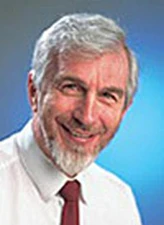John Mitchell

The 2004 Hans Oeschger Medal is awarded to John Mitchell for his pioneer research in using atmosphere-ocean general circulation models to understand natural and anthropogenic influences on climatic changes.
On joining the Met Office, J. Mitchell moved quickly to the field of climate, and over the last two decades built up a research group in the Meterorological Office to become a world leading group in the field of understanding and prediction of climate change. He has overseen the development of state-of-the-art models, as well as contributing directly to their improvement.
He has been among the first to use models to explain past climates, and to use palaeoclimatic data to assess the reliability of climate models. He demonstrated for the first time in simulations of the mid-Holocene how climate feedbacks can modify the climate response to forcing unexpectedly. He also discovered that any similarity between the climate of the Holocene and that predicted with increased carbon dioxide was likely to be fortuitous, as the physical mechanisms involved are quite different.
One of the main problems in modelling climate is the representation of small scale physical processes and he has pioneered the quantification of uncertainty associated with the parameterization of these processes, highlighting the processes needing further observation and refinement. His group has been one of the first to develop and use coupled ocean atmosphere models to investigate climate change. He was the first to demonstrate that ocean atmosphere general circulation models can reproduce the climate of the last century, provided that the cooling effect of sulphate aerosols is taken into account.
The attribution of recent climate change to human activity is one of the most important problems in climate research. With his colleagues, they were first to demonstrate the likely presence of a human induced effect on the vertical temperature structure of the Earth, and to explain the spatio-temporal structure of changes in surface temperature during the twentieth century. Further work has estimated the magnitude of the anthropogenic and natural contributions to recent climate change, and for the first time allowed observations of past changes to estimate uncertainty in predictions of climate change. These papers with the statistical methods provide the most convincing evidence to date of a human impact on climate.
Finally, he has played a highly significant role in international assessments of climate change, notably the Intergovernmental Panel on Climate Change where he was a lead author (1995) or convening lead author (1990, 2001) as well as having a strong influence on the development climate change research through collaboration and membership of international committees.
